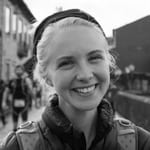[Editor’s Note: In this article, photographer Kirsten Kortebein documents the 2016 Zolkan 4 Days race in Chile. All photos and words are by Kirsten Kortebein.]
Last week marked the inaugural edition of Zolkan 4 Days, a 100-kilometer, four-stage trail race in Chile. The race’s concept was to cross the country of Chile from west to east, from the Andes mountains to the Pacific Ocean; it included 4,000 meters (13,120 feet) of elevation gain and 8,000 meters (26,240 feet) of loss.
Forty-four runners ran the race, coming from eight different countries to run across the country and spend time together. The size of the race made for a spirit of encouragement and support during the day, and laughter and shared moments during the evening.
The race organization’s objective was to give runners an all-inclusive race experience, contrasting grueling days out with don’t-worry-about-anything evenings. The race’s four stages were filled with painful kilometers for many competitors, including extreme changes in altitude, temperature, and weather, which often left runners exposed–without warning–to biting winds and harsh Chilean sun. However, upon arrival to each day’s base camp, the runners had “everything [we] could ever ask for, seriously!” Post-race evenings offered runners a smorgasbord of options for recovery and opportunities to spend time together. Dinners were filled with traditional food, from local fish to empanadas, and the regional beer and wine never seemed to run out. (Except on Day Three, nobody is quite sure what happened to the wine on Day Three.)
This race offered a clear example of the balance between extremely hard work, and recovery and relaxation. All in all, the week is probably best summed up by a runner’s quote from the final finish line: “They pamper you at night… but they kick your arse during the day!”
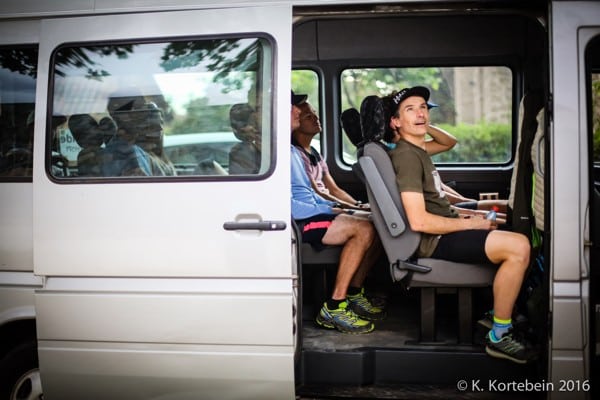
After a pre-race press conference in Santiago, Chile, runners pile into vans and head toward the mountains.
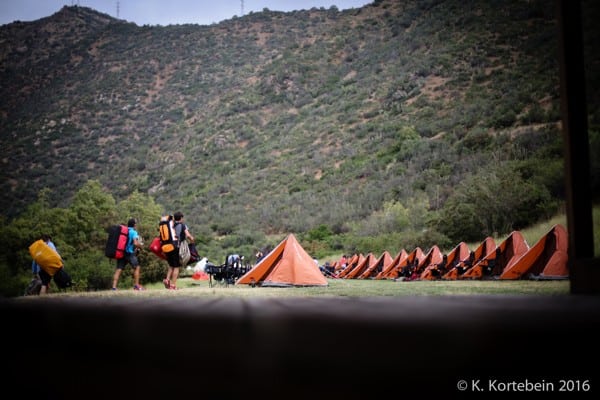
Runners arrive to their first base, a remote camp called Antawaya. Each runner was given his or her own tent, camp chair, air mattress, and lantern, which were moved from camp to camp by the organization.
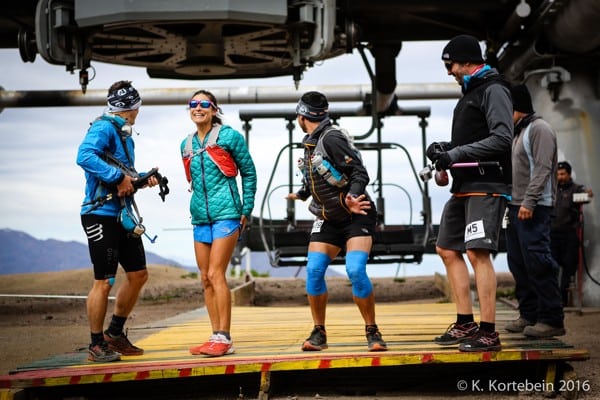
To reach the starting line of the race, competitors took a lift from the ski village of La Parva. In Chile, January means summer, and the lift came out of hibernation to carry the runners to the summit start line.

Two runners prepare before the start of Day One, which was comprised of 25 kilometers (15.5 miles) of entirely downhill running.
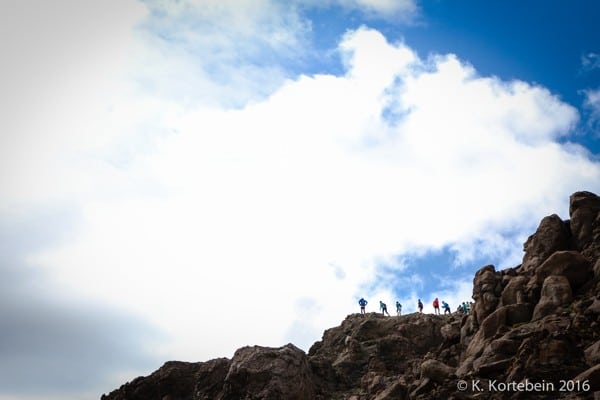
Competitors hiking the last climb to the start line, which topped out at over 3,000 meters (9,840 feet) of elevation. The change in altitude from base camp in Antawaya to the start line was significant, and many runners found the Andean altitude to be challenging.

Runners ditch their jackets with a member of the medical team before gathering at the start line.
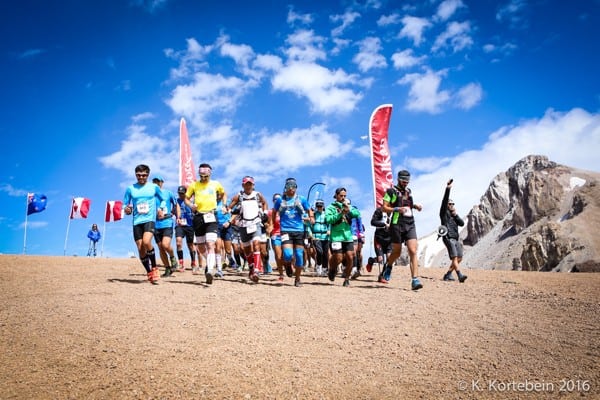
Rodrigo “Canuto” Errázuriz, one of the race’s two directors, sends the runners off. From this point on, the group would be traveling away from the Andes, and spending the next four days crossing the country toward the Pacific Ocean. (Note: The second of the two aforementioned race directors is Juan Carlos Politis Huidobro.)
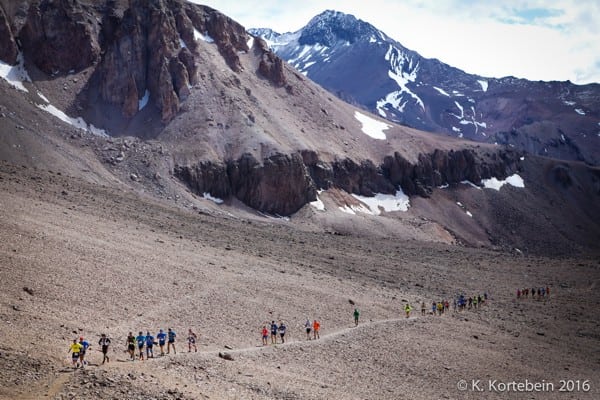
The group snakes through a lunar-like valley on their way down from the start line’s summit.
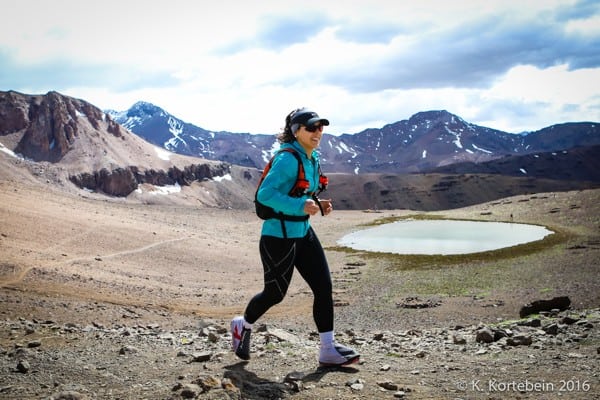
Paula Narvaez (Chile) passes a lagoon during Day One.
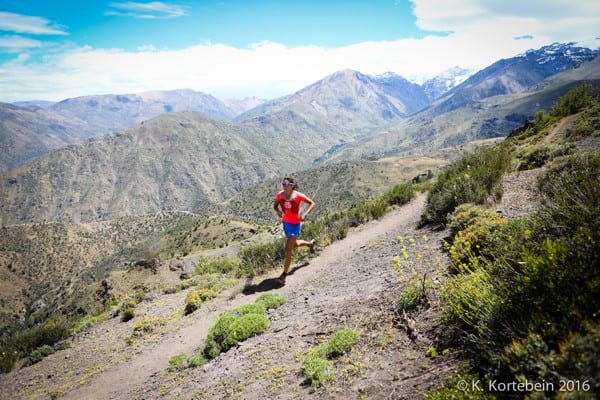
Veronica Bravo (Chile) tackles a downhill during Day One. “Every day of this race required totally new planning and strategy,” said Bravo of the race’s daily difference in terrain. Veronica went on to win the women’s race overall, finishing just over three hours ahead of her closest competition.
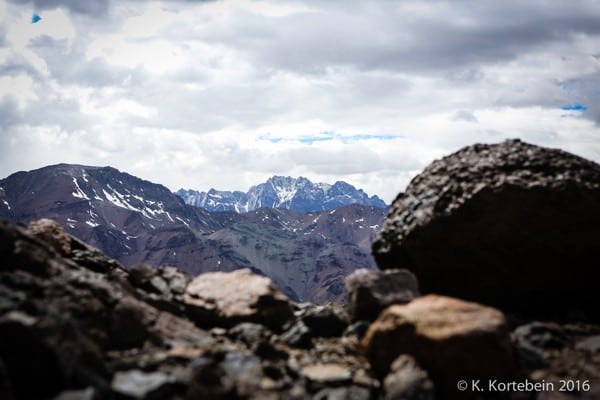
Runners left the Andes behind on Day One, and began to head west.
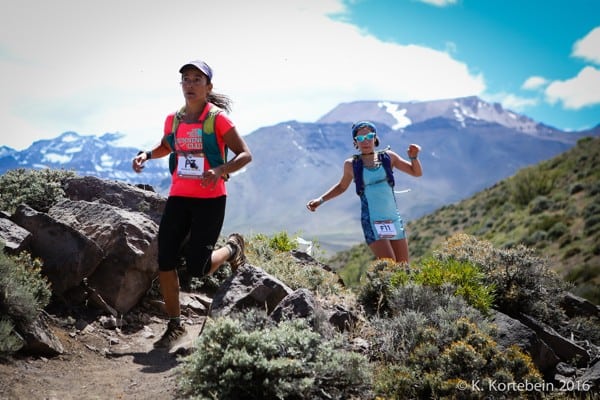
Michelle Trujillo and Katherine Cañete Arredondo weave their way through Day One’s terrain.
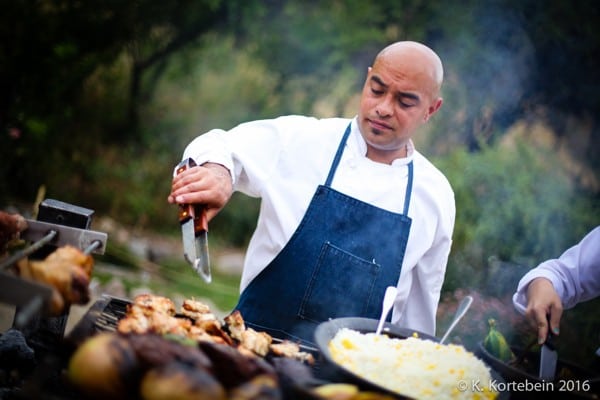
Dinner preparation in base camp. Meals were comprised of many traditional foods, including different types of meat, but always included vegetarian and gluten-free options as well.

The runners and organization ate breakfast, lunch, and dinner together each day of the race, which gave everyone a chance to unwind and recover before the subsequent stage. “We wanted to give [the runners] a hard day out, a hard day running,” said race coordinator Matias Bull. “But once they arrived at the finish line, they didn’t have to worry about anything–food, massages, taping, nothing. We took care of all of that. They should just focus on recovery, and enjoy spending time together.”

Day Two was a difficult one. Including within its 47 kilometers (29 miles) was 2,800 meters (9,180 feet) of ascent and 3,000 meters (9,840 feet) of descent. Here competitor Sébastien Chaigneau (France) negotiates Day Two.

Matt Maynard, a U.K. native who lives in Chile, heads toward the summit of Cerro Provincia during Day Two.

A runner savors one of the last ‘flat’ stretches of trail before the grueling climb up to the summit of Provincia.

An ever-smiling Cindy Ramirez during Day Two.
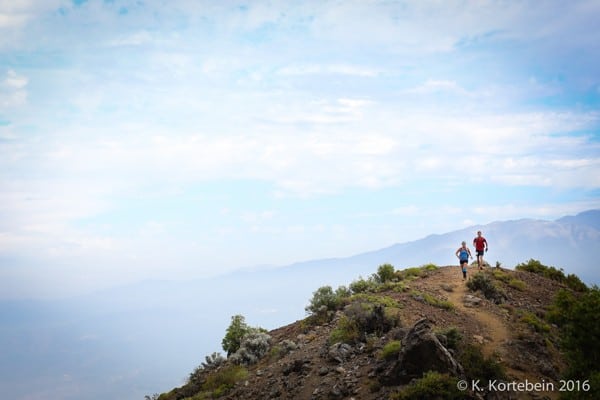
Jon Sinclair and Melissa Gosse, residents of Canada, summit a climb between the Andes and Santiago.

Upon arrival at each day’s finish line, competitors were provided with complimentary massages, medical work (taping, blister care, etc.), ice baths, fruit, and cold, local craft beer.
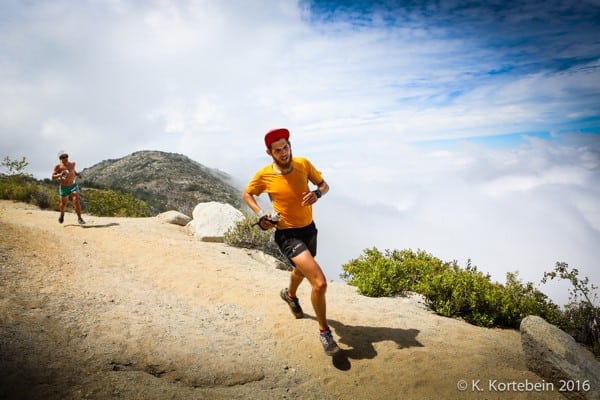
Moisés Jiménez (Chile) heads past a sea of clouds during Day Three. Moisés was the overall men’s winner of Zolkan 4 Days, followed closely by Max Keith (Chile) in second place, and Seb Chaigneau in third.
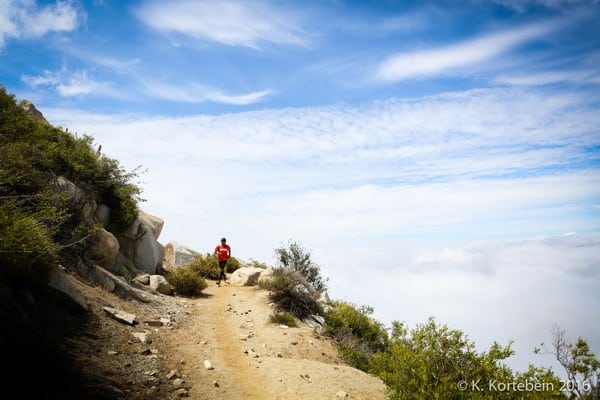
Francisco Pino (Chile) enjoys a smooth downhill section of trail during Day Three; this stage’s terrain was in stark contrast to the sharp, dark rocks of the Andes in the race’s first two days.

Francisca González (Chile) navigates a leafy trail on Day Three. As the runners headed further West–away from the Andes and toward the ocean–they encountered landscapes which were wildly different than the environment in which they had started the race, exchanging snow-capped peaks for spongy forest floors.

Max Keith during Day Three of the race. “These four days were just the perfect instance to hang with awesome people, and to play around [my] favorite trails in the area,” said Keith, who is a resident of Santiago.
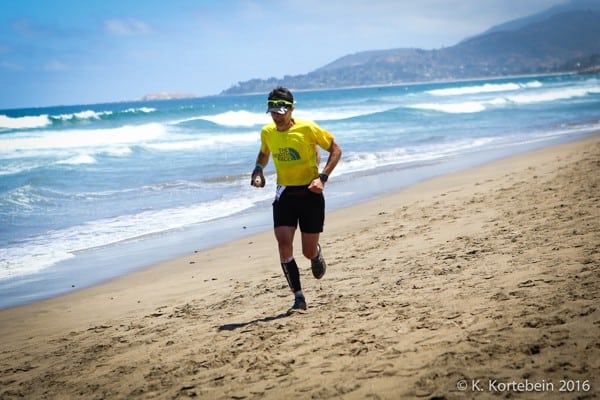
On Day Four, runners finally reached the Pacific Ocean. Here, Seb Chaigneau runs the final stretch of beach before arriving at the finish line. Seb’s presence in this race was a beautiful thing to watch; he spent every night laughing with his fellow runners, exchanging everything from recovery tips to Chilean wine.
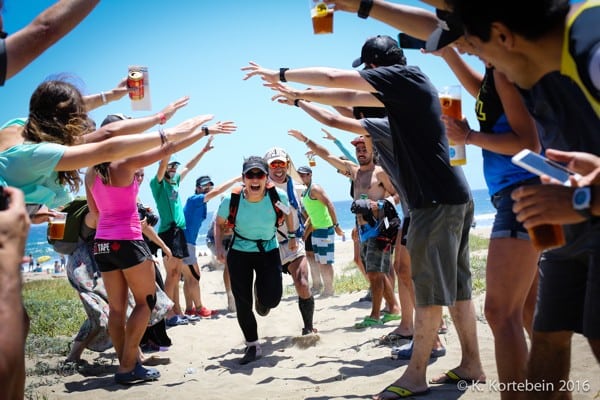
Paula and Raul Narvaez (Chile) arrive to the finish line of Day Four, and are greeted by their running mates. Paula and Raul, who are father and daughter, ran the entirety of Zokan 4 Days together.
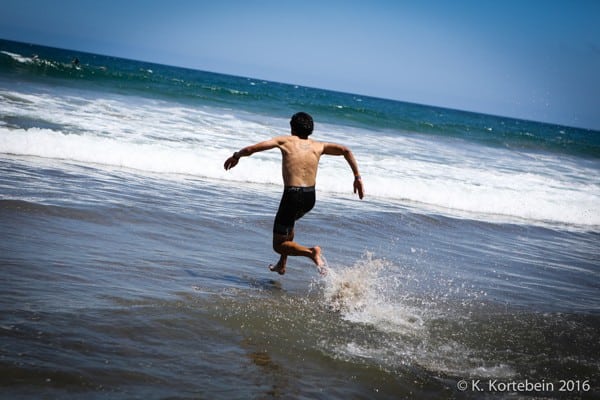
A competitor sprints into the ocean after finishing the race’s final stage.
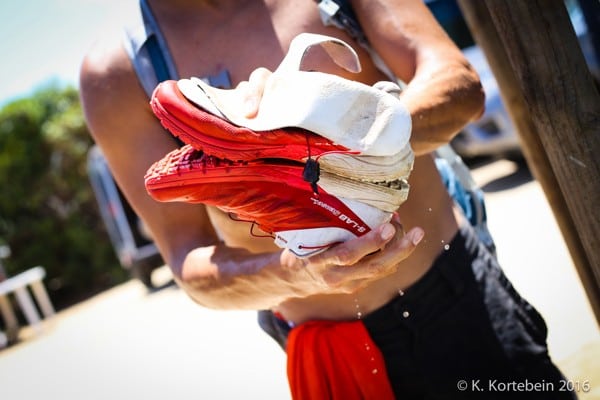
Everyone did their best to dry out their gear after a day running toward–and in some cases through–parts of the sea.
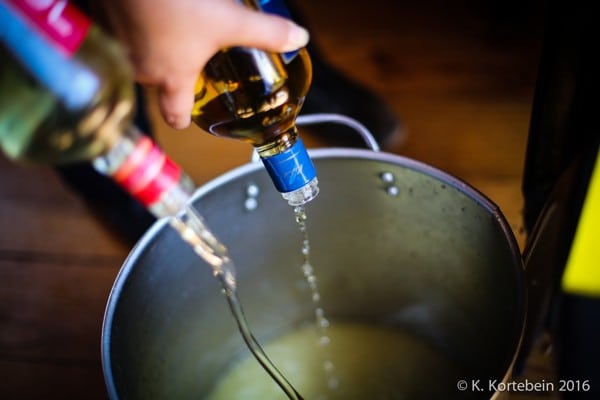
A huge batch of pisco sour is prepared upon competitors’ arrival to the beach. “Pisco sour is complicated,” laughs one member of the Zolkan team. “There’s sort of a ‘battle’ about if the drink is Peruvian, or if it’s Chilean–but no matter what, it’s definitely for celebrations!”
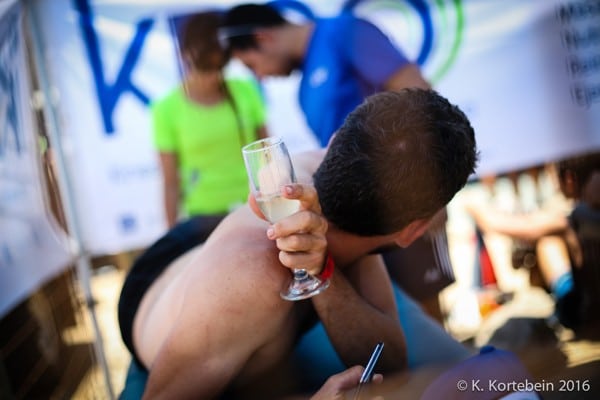
Fabien Beaufils (France) enjoys a post-race massage and pisco sour.
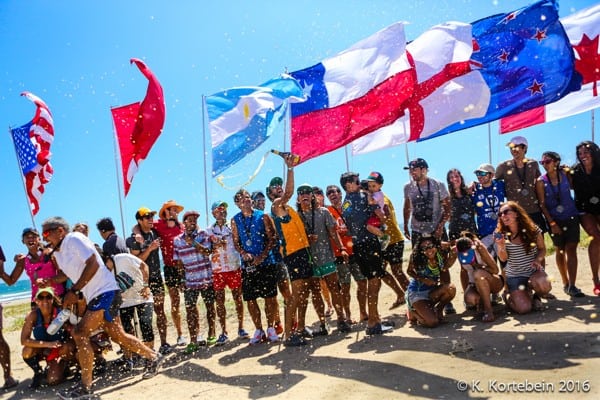
A final celebration on Chile’s Pacific coast at the conclusion of Zolkan 4 Days. “These days weren’t just about racing,” said race coordinator Matias Bull. “We wanted to give everybody the chance to exchange experiences, to exchange knowledge, to learn, to teach, to make connections. It’s not about us being different, being from different countries; it’s about creating an event for people who want to meet each other, but just haven’t had the opportunity to yet. …So, we gave them the opportunity!”
